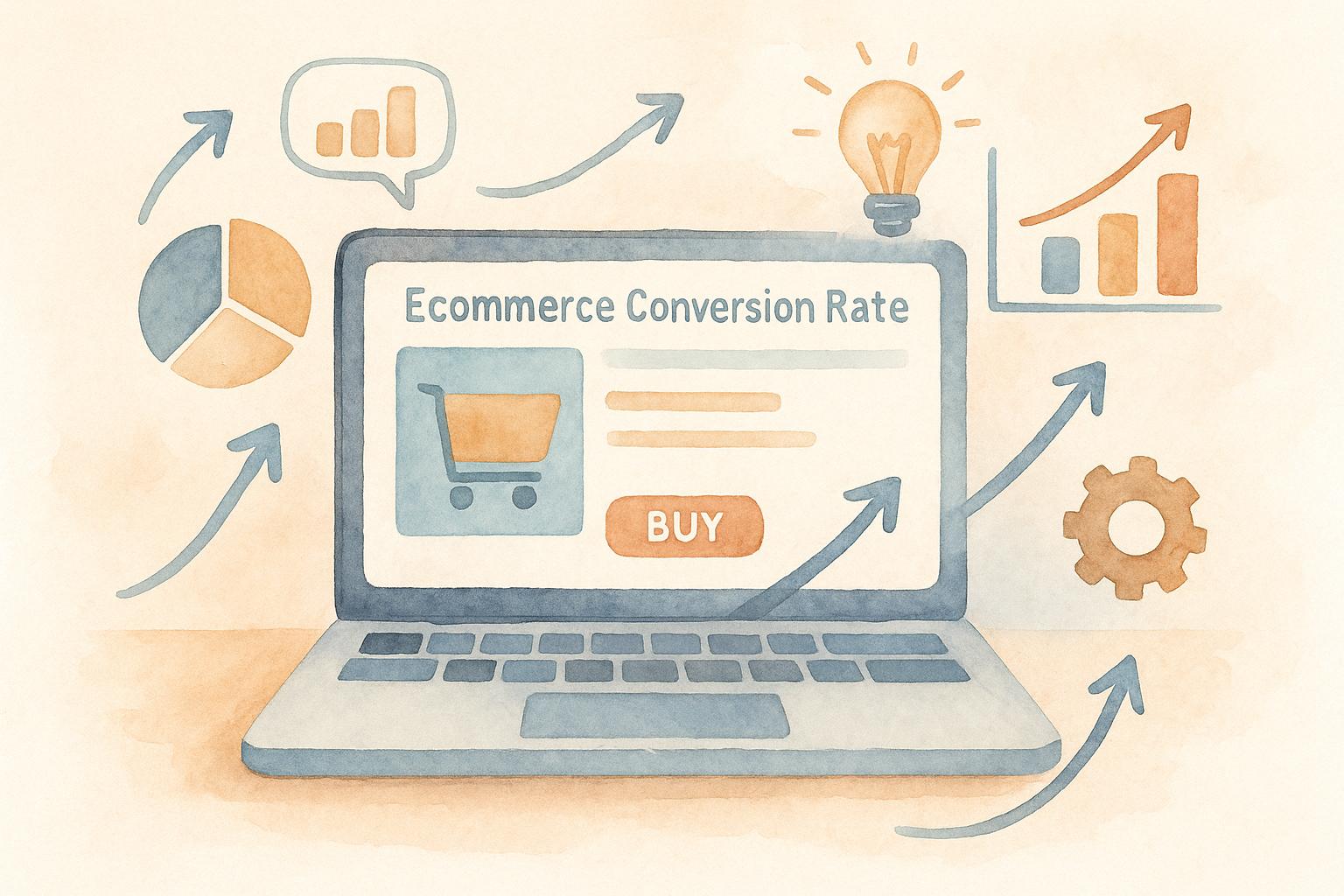Goldfield & Banks faced stalled growth, technical issues, and costly marketing. A 60-day plan fixed these problems and delivered a 339% revenue increase year-over-year. Here's how:
Audit (Days 1–15): Identified slow website, high customer acquisition costs, and team inefficiencies.
Quick Fixes (Days 16–45): Improved site speed, checkout flow, and email marketing, boosting conversions from 1.3% to 1.93%.
Launch & Scale (Days 46–60): Reorganized the team and launched Pacific Rock Flower with automated workflows, achieving over 2,000 sign-ups at $0.72 per lead.
Key Results:
Revenue: +339% YoY in April.
Email revenue: +18% MoM.
Checkout conversion: 1.93%.
This turnaround shows how audits, quick fixes, and team restructuring can drive rapid growth.
Ecommerce Brand's 10X Growth: $3M to $30M Success Story
1. Audit Findings: Core Problems
Our in-depth audit uncovered four major challenges at Goldfield & Banks.
Website and UX Issues
Users encountered slow load times and navigation errors, which negatively impacted both engagement and sales. These technical issues created a ripple effect, affecting overall channel performance.
Marketing Channel Performance
Channel | Key Issues | Impact |
|---|---|---|
Meta Ads | Inconsistent ROAS | Unpredictable campaign results |
U.S. Market | High customer acquisition costs | Increased spending on new customers |
Under-segmented lists | Lower engagement rates | |
SMS | Redundant messaging across channels | Ineffective communication efforts |
Team Structure Gaps
Operational inefficiencies within the team further exacerbated challenges:
Overlapping responsibilities in digital marketing and eCommerce caused confusion over campaign ownership.
Teams and departments lacked clearly defined KPIs.
There was no cohesive strategy for working with agencies, leading to reduced accountability.
Key roles in analytics and merchandising were not filled, leaving critical gaps in expertise.
These structural issues amplified the risk of launching new products without proper preparation.
Product Launch Readiness
The Pacific Rock Flower launch faced several hurdles:
No automated workflows were set up for the sample program.
Landing page templates were not created.
These gaps highlighted the urgent need for intervention, forming the foundation for our 60-day action plan.
2. First 30 Days: Quick Fixes
After completing the audit, we focused on stabilizing systems and improving performance. In the first 30 days, we implemented four targeted fixes to address key issues.
System Stability Updates
We rolled out a set of updates to improve reliability and minimize technical problems:
Installed Rewind for automated daily backups
Enabled 24/7 uptime monitoring with instant alerts
Created a staging environment to safely test changes
Set up automated product-change notifications
These updates provided a solid foundation for better analytics and smoother operations.
Analytics Setup
To better understand user behavior, we introduced three tracking tools:
Tool | Purpose | Outcome |
|---|---|---|
Heat mapping and session recording | Delivered heatmaps for weekly analysis | |
Customer journey analysis | Offered detailed user behavior insights | |
Shop Promise | Order tracking integration | Simplified order tracking for customers |
These tools provided actionable insights that helped refine our strategies.
Checkout Flow Improvements
We made updates to the checkout process that directly improved conversions:
Added dynamic call-to-action buttons based on stock availability
Upgraded the payment interface with Klarna and Afterpay options
Displayed duty and tax banners for international shoppers
Introduced a flat-rate $30 international shipping policy
These changes led to a jump in the conversion rate from 1.3% to 1.93% within 30 days.
Email Marketing Reset
We revamped our email marketing strategy to boost engagement and revenue:
Synced SMS consent collection across all touchpoints
Ran Klaviyo A/B tests to optimize email flows
Started a pop-up testing program to capture more leads
This overhaul paid off quickly, driving an 18% increase in email revenue compared to the previous month.
These initial fixes laid the groundwork for the team reset and the launch of Pacific Rock Flower.
3. Team Reset and Product Launch
Team Reorganization
We took a close look at our agency partnerships and internal roles, then introduced a performance-focused framework to improve efficiency:
Area | Previous State | Updated Approach |
|---|---|---|
Agency Oversight | No defined metrics | Weekly scorecards with ROAS targets |
Internal Roles | Undefined responsibilities | Clear KPI matrix |
Team Structure | Disconnected processes | Defined ownership boundaries |
Here’s what changed:
New specialized roles were added to address gaps in analytics and merchandising.
A hybrid team structure was introduced, blending full-time employees, freelancers, and near-shore talent.
The revamped team included a full-time eCommerce Marketing Manager based in Australia, a senior CRO developer on a project basis, a dedicated launch copywriter, and a near-shore support team located in the Philippines.
This structure brought flexibility and accountability, helping us overcome challenges during the Pacific Rock Flower launch and setting the stage for success.
Pacific Rock Flower Launch Results

With the reorganized team in place, we tackled the technical roadblocks for the Pacific Rock Flower launch. The main issue? Shopify's inability to handle $0 checkouts. Here’s how we solved it:
Technical Implementation A multi-step solution was built using Shopify Flow integrated with Gift Card Factory to:
Automate sample requests
Accurately track conversions
Manage inventory effectively
This setup ensured the marketing automation could run smoothly.
Marketing Automation
The launch strategy relied on:
Klaviyo for automated follow-ups
Viral Loops for a referral system
The results? Over 2,000 sign-ups in the first week at an average cost of $0.72 per lead, with campaign revenue exceeding sampling costs.
This new team structure and successful launch created a system for growth, with clear responsibilities and measurable metrics across all channels.
4. 60-Day Results
Sales and Revenue Data
The 60-day period brought impressive growth. In April, revenue jumped 339% year-over-year with Meta ad spending carefully managed at $12,800.
Revenue Metric | Before | After |
|---|---|---|
Monthly YoY Growth | Flat | +339% |
Peak Daily Revenue | Under $10,000 | $11,800 |
Meta Ad Spend | Inconsistent | $12,800 (planned) |
This growth highlights a steady upward trajectory, paving the way for further operational enhancements.
Team Performance Metrics
The improvements extended beyond just revenue. Performance metrics showed clear progress, thanks to earlier fixes to systems and checkout processes:
Performance Area | Improvement |
|---|---|
Mobile Site Speed Score | +22 points |
Checkout Conversion Rate | 1.93% |
Email Revenue | +18% Month-over-Month |
System Uptime | 100% since fixes |
Efficiency also improved through team restructuring efforts, which included:
Switching to an Asana-based sprint system for better project management
Introducing weekly business reviews with clear KPI accountability
Creating smoother workflows across marketing, tech, and customer service teams
These technical upgrades and organizational changes laid the groundwork for continued growth, as reflected in the improved metrics and streamlined collaboration.
5. Key Findings for eCommerce Brands
System Audit Insights
Conducting a detailed system audit can significantly improve marketing scalability. This audit uncovered critical issues that, once resolved, provided immediate returns through actionable, data-based insights.
"Understanding the customer reduces the cost to acquire them. Currently, most customer insights are based on anecdotal data - having this depth of information makes it easier to develop plans and target digital marketing activity. Delve AI's technology and approach to persona based marketing is the missing link for retailers. I have seen it in action and seen the results that come from Delve AI."
These findings also helped refine the focus on team performance metrics, ensuring better alignment with business goals.
Team KPI Improvements
Establishing clear performance metrics and redefining team roles increased accountability and overall performance. Regular evaluations and clearly defined responsibilities helped align the team with strategic goals, improving day-to-day operations.
These adjustments also laid the groundwork for smoother product launches.
Launch Process Optimization
The Pacific Rock Flower launch highlighted the importance of automation in handling high-traffic product releases. Automated processes proved to be a key factor in ensuring a smooth and efficient launch experience.
6. Next Steps
Growth Framework Overview
Following the successful 60-day turnaround, the focus now shifts to a structured growth plan aimed at building on recent achievements. This plan targets three main areas:
Shopify 2.0 Migration: A complete theme overhaul, paired with Triple Whale attribution for improved tracking and analytics.
Customer Retention: Introducing a loyalty program that includes subscription options to encourage repeat business.
U.S. Market Re-entry: Preparing for a Q4 re-entry into the U.S. market using audience-tested creative strategies and streamlined agency compensation.
This approach lays the groundwork for working with specialists who can bring these strategies to life.
Work With Uncommon Insights
For eCommerce brands, our audit-to-action system is designed to deliver measurable outcomes. Using in-depth audits and data-backed customer insights, we create smooth and effective customer journeys.
For businesses earning between $1M and $10M annually, our phased approach includes the following:
Phase | Deliverables | Timeline |
|---|---|---|
Audit | Tech stack review, channel performance analysis, team evaluation | Week 1–2 |
Action Plan | Custom roadmap, KPI development, and automation strategies | Week 3–4 |
Implementation | Optimizing systems, restructuring teams, and preparing for launch | Week 5–8 |
Oversight | Weekly performance tracking, scorecards, and strategy adjustments | Ongoing |
The 339% year-over-year growth achieved in April 2025 highlights the effectiveness of this methodology.
FAQs
What key strategies led to a 339% revenue growth for Goldfield & Banks in just 60 days?
The 339% revenue growth for Goldfield & Banks was achieved through a combination of targeted audits, foundational fixes, and strategic optimizations. Key actions included:
Tech and site improvements: Implemented 24/7 uptime monitoring, dynamic checkout buttons, and optimized site speed, resulting in a smoother customer experience and higher conversion rates.
Channel and retention enhancements: Adjusted ad spend strategies, improved email segmentation, and introduced SMS consent sync, driving more efficient marketing and higher customer engagement.
Team restructuring: Defined clear KPIs, streamlined roles, and brought in new talent to fill critical gaps, ensuring better alignment and accountability.
These efforts were executed within a focused 60-day plan, leading to immediate and measurable results.
How did restructuring the team at Goldfield & Banks impact the successful launch of Pacific Rock Flower?
Restructuring the team at Goldfield & Banks played a pivotal role in the successful launch of Pacific Rock Flower by addressing critical gaps in roles and processes. Key changes included redefining internal roles, implementing a KPI matrix for accountability, and resetting agency scopes to ensure alignment with business goals. Additionally, the team was reorganized to operate on Asana sprints and weekly reviews, which streamlined workflows and improved ownership.
These adjustments allowed the team to focus on operational automation and creative execution for the launch. As a result, they overcame technical hurdles, like Shopify's $0 checkout limitation, and achieved 2,000 sign-ups within 24 hours while keeping the cost per lead at just $0.72. This efficient collaboration and structure directly contributed to the campaign’s success, generating revenue that exceeded sampling costs within the first week.
How did automated workflows and tools help improve customer acquisition and conversion rates during the 60-day plan?
Automated workflows and tools were pivotal in driving better customer acquisition and higher conversion rates during the 60-day plan. For the Pacific Rock Flower launch, a custom gift-card workflow using Shopify Flow and Gift Card Factory, paired with Klaviyo sync and Viral Loops tiering, led to 2,000 sign-ups in just 24 hours at a cost per lead of $0.72.
Additionally, tools like Microsoft Clarity and Delve.ai provided actionable insights through heatmaps and user journey data, enabling weekly optimizations. Enhancements to the checkout process, including dynamic buttons and integrations with Klarna and Afterpay, boosted the conversion rate from 1.3% to 1.93%. These improvements not only streamlined operations but also delivered measurable results quickly.



